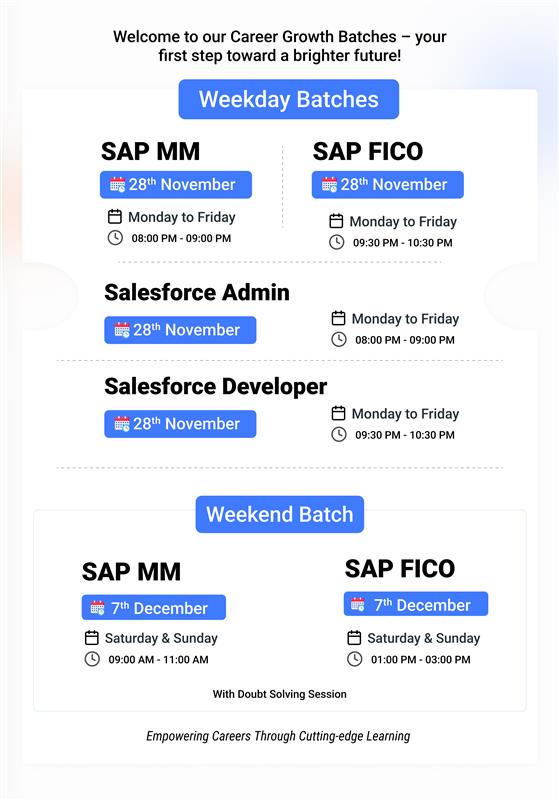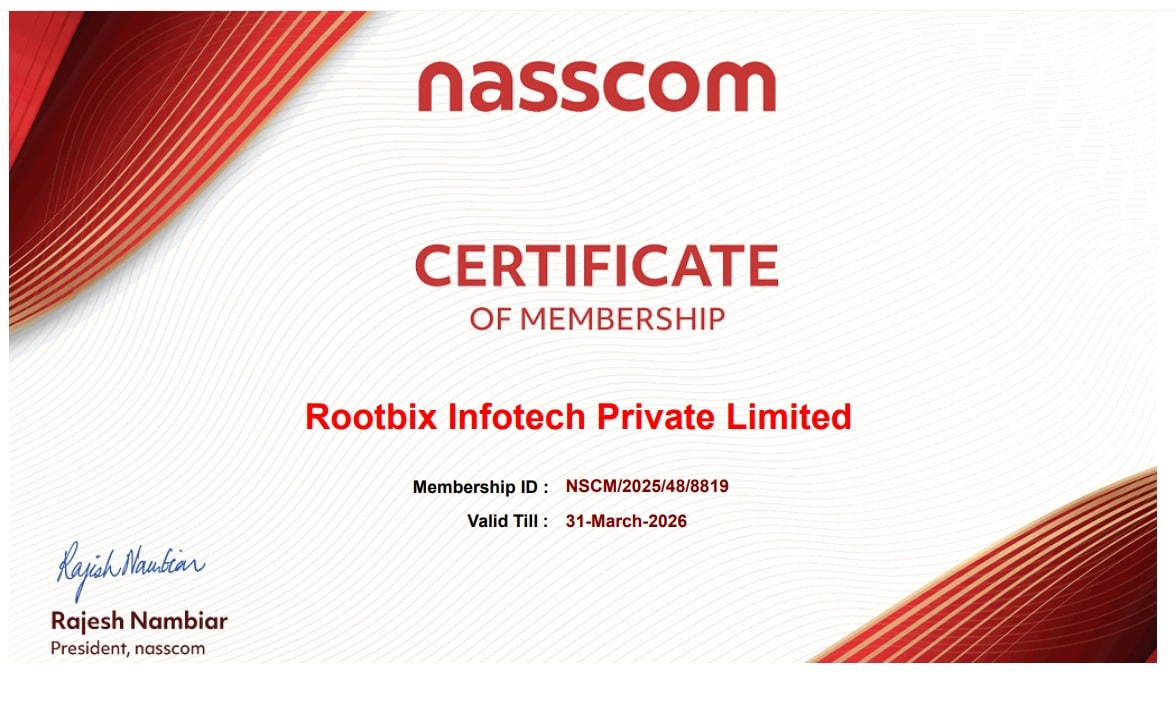Best Understanding CDS Views and AMDP in Modern ABAP Development 2025
The SAP ecosystem has evolved dramatically over the years, with modern ABAP development now focusing on performance, scalability, and database-centric approaches. Two key technologies enabling this evolution are Core Data Services (CDS) Views and ABAP Managed Database Procedures (AMDP). These tools empower developers to push complex logic closer to the database layer, optimize performance, and deliver rich, data-driven applications.
In this article, we will explore Understanding CDS Views and AMDP in Modern ABAP Development, their features, benefits, use cases, and best practices, helping ABAP developers understand how to leverage them in modern SAP projects.

What Are CDS Views?
Core Data Services (CDS) Views are an advanced way of defining database views in SAP. Unlike traditional SQL views, CDS Views allow developers to build semantic data models directly at the database layer, following the code-to-data paradigm. This approach moves data-intensive operations closer to the database rather than executing them on the application server, leading to significant performance improvements.
Key features of CDS Views include:
-
Simplified Data Modeling: CDS provides a clear, declarative syntax that is easier to read and maintain than conventional SQL statements.
-
Annotations for Metadata: Developers can add annotations to define UI behavior, security authorizations, and analytics integration.
-
Integration with OData Services: CDS Views can be exposed easily as OData services, enabling seamless integration with SAP Fiori applications.
-
Reusable Models: CDS Views can be consumed by multiple applications, reports, and analytical tools, ensuring consistency across the enterprise.
For example, a CDS View can combine multiple tables like sales orders, customers, and products, and provide a ready-to-use dataset for Fiori apps, analytics dashboards, or custom reports.
Benefits of CDS Views
The adoption of CDS Views in modern ABAP development brings several advantages:
-
Performance Improvement: By executing logic at the database level, CDS Views reduce the volume of data transferred to the application server, speeding up queries and reports.
-
Reduced ABAP Code Complexity: Since data modeling and logic can be pushed into the CDS layer, ABAP programs require less coding, making them easier to maintain.
-
Seamless Integration: CDS Views work well with transactional applications, analytical tools, and SAP Fiori/UI5 apps, enabling end-to-end solutions.
-
Security and Authorization Management: Annotations allow developers to define access restrictions directly in the CDS View, ensuring secure and compliant applications.
In essence, CDS Views are the foundation for modern, data-driven SAP applications, particularly when combined with SAP HANA’s in-memory database capabilities.
What Is AMDP?
ABAP Managed Database Procedures (AMDP) is another powerful tool in modern ABAP development. Unlike CDS Views, which are primarily for data modeling and reporting, AMDP is used for writing complex database procedures in SQLScript (specific to SAP HANA) within ABAP classes. This allows developers to execute data-intensive operations efficiently without leaving the ABAP environment.
Key features of AMDP include:
-
Embedded in ABAP Classes: AMDP procedures are created within ABAP classes, marked with the AMDP annotation, enabling easy management within the ABAP repository.
-
Direct Database Execution: Procedures run directly on the database, taking advantage of HANA’s in-memory processing and parallel execution features.
-
Complex Logic Support: AMDP allows loops, conditional statements, aggregations, and other advanced logic to be processed efficiently at the database layer.
-
Version Control and Transport Management: Since AMDP code resides in the ABAP repository, it benefits from SAP’s standard transport and version control processes.
AMDP is particularly useful for scenarios like mass data processing, complex calculations, or tasks that require highly optimized HANA-specific features.
Benefits of AMDP
Using AMDP in ABAP development offers several strategic advantages:
-
High Performance: Data processing occurs at the database layer, minimizing network traffic and reducing execution time.
-
HANA-Specific Optimization: Developers can leverage HANA’s advanced features, such as parallel processing, window functions, and calculation views.
-
Centralized Management: All procedures remain within ABAP classes, simplifying version control, transport, and maintenance.
-
Complex Data Operations: AMDP allows handling tasks that would be cumbersome or inefficient with standard ABAP loops and internal tables.
With these benefits, AMDP has become a standard tool for developers seeking optimized, high-performance solutions in SAP HANA environments.
When to Use CDS Views vs AMDP
Understanding the right use case for each technology is key to modern ABAP development:
Use CDS Views when:
-
You need reusable, semantic data models.
-
You are integrating with SAP Fiori/UI5 apps.
-
You want annotations for security, UI, and analytics.
-
The logic is primarily about data retrieval and aggregation, rather than complex calculations.
Use AMDP when:
-
You require complex business logic or heavy data processing.
-
You need to access advanced HANA-specific features for optimization.
-
The process involves loops, conditions, and transformations that are best executed at the database level.
In practice, CDS Views and AMDP are complementary. CDS Views handle data modeling, reporting, and integration, while AMDP executes performance-intensive operations, ensuring that the ABAP system leverages SAP HANA’s full capabilities.
Best Practices for CDS Views and AMDP
-
Push Logic to the Database: Minimize processing on the application server by using CDS and AMDP for calculations and aggregations.
-
Use Annotations Wisely: Include only necessary metadata and security annotations to keep CDS Views efficient.
-
Modular Design: Break complex procedures into reusable CDS Views or AMDP methods for easier maintenance.
-
Performance Monitoring: Regularly check execution plans and optimize queries in HANA Studio or SAP Fiori analytics.
-
Version Control: Maintain all CDS and AMDP objects in the ABAP repository to track changes and ensure smooth transport management.
By following these practices, developers can deliver robust, scalable, and high-performing ABAP applications.
Top 10 FAQs on Understanding CDS Views and AMDP in Modern ABAP Development
1. What are CDS Views in SAP?
CDS Views (Core Data Services Views) are advanced database views that allow developers to define semantic data models directly at the database layer. They simplify data retrieval, integrate with Fiori apps, and support annotations for analytics and security.
2. What is AMDP in SAP ABAP?
ABAP Managed Database Procedures (AMDP) let developers write SQLScript procedures directly within ABAP classes. These procedures execute on the database, providing high-performance processing for complex data operations.
3. How do CDS Views improve performance?
CDS Views push data-intensive logic to the database layer, reducing the need to transfer large datasets to the application server. This improves query speed and reduces ABAP code complexity.
4. When should I use CDS Views vs AMDP?
Use CDS Views for reusable data models, Fiori/UI5 integration, and semantic annotations. Use AMDP for complex calculations, heavy data processing, or tasks requiring advanced HANA features.
5. Can CDS Views be exposed to SAP Fiori applications?
Yes. CDS Views can be easily exposed as OData services, making them ready for SAP Fiori/UI5 apps and analytical dashboards.
6. What are the benefits of using AMDP?
AMDP provides high-performance data processing, access to HANA-specific features like parallel execution, and keeps all code within the ABAP repository for better version control.
7. Are CDS Views and AMDP complementary technologies?
Yes. CDS Views are best for semantic modeling and reporting, while AMDP is ideal for performance-intensive, data-heavy operations. Using both ensures robust, efficient SAP applications.
8. How do annotations in CDS Views work?
Annotations in CDS Views add metadata for UI behavior, security, or analytics. For example, they can restrict data access, define field labels, or integrate the view with SAP Fiori tiles.
9. Can I maintain AMDP procedures within ABAP classes?
Absolutely. AMDP procedures are written inside ABAP classes with the AMDP marker, which allows for version control, transport management, and centralized maintenance.
10. Where can I learn practical CDS Views and AMDP skills?
Institutes like GTR Academy offer structured training on modern ABAP development, covering CDS Views, AMDP, SQLScript, and Fiori integration with real-world scenarios and hands-on exercises.
Connect With Us: WhatsApp
Conclusion
CDS Views and ABAP Managed Database Procedures (AMDP) are central to modern ABAP development in SAP HANA. CDS Views excel in semantic data modeling, integration, and simplicity, while AMDP is ideal for complex, performance-critical database operations.
Mastering both technologies allows ABAP developers to:
-
Build efficient, scalable applications.
-
Reduce ABAP code complexity.
-
Leverage SAP HANA’s in-memory capabilities fully.
-
Deliver integrated solutions for Fiori apps, analytics, and transactional systems.
For organizations embracing SAP S/4HANA, understanding and effectively using CDS Views and AMDP is no longer optional—it is essential for digital transformation and operational excellence. Developers who master these tools can create applications that are faster, smarter, and more efficient, meeting the demands of modern enterprises.
Institutes like GTR Academy provide structured training on CDS Views, AMDP, and modern ABAP techniques, equipping developers with the skills to handle real-world SAP challenges confidently.











